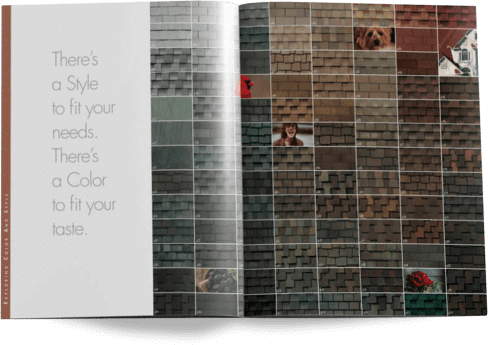Roof Drainage 101: Preventing Water Damage Before It Starts
Proper roof drainage is a crucial aspect of maintaining a healthy, durable roof. Without effective drainage systems in place, your roof can quickly fall victim to water damage, which can lead to costly repairs, structural issues, and even mold growth. In this guide, we’ll walk you through the basics of roof drainage and provide you with practical tips for preventing water damage before it starts.
If you’re in Miamisburg, OH, and experiencing roof drainage issues, it’s important to address them quickly to avoid further damage. CPM ROOF is here to help with storm damage roof repairs and routine roof maintenance to ensure your roof stays in top condition.
The Importance of Proper Roof Drainage
Your roof is your home’s first line of defense against the elements. When it rains, snow melts, or water accumulates on your roof, the drainage system must efficiently remove this water to prevent pooling and overflow. If water isn’t directed away from your roof and home, it can lead to several serious issues:
- Leaks: Standing water on your roof can seep into the structure, leading to leaks that cause interior damage, including staining on walls, ceilings, and floors.
- Mold and Mildew: Excess moisture provides the perfect environment for mold and mildew to grow, which can be harmful to your health and the integrity of your home.
- Roof Wear and Tear: Over time, pooled water can weaken roofing materials, causing shingles to deteriorate or tiles to crack.
- Structural Damage: Uncontrolled water can seep into the underlying structure of your home, compromising beams, insulation, and framing.
Maintaining a functional roof drainage system helps avoid these issues and keeps your roof intact, prolonging its lifespan.
Key Components of a Roof Drainage System
To understand roof drainage, it’s essential to familiarize yourself with the system components that help direct water away from your roof:
#1: Gutters
Gutters are one of the most common components of a roof drainage system. They are installed along the roof’s edge to capture and funnel rainwater away from the roof and down to the ground. Gutters help prevent water from spilling over the sides of the roof, which could otherwise cause damage to your foundation, landscaping, or exterior walls.
However, gutters need regular maintenance to function effectively. If gutters are clogged with debris such as leaves, twigs, and dirt, they can become blocked and prevent water from flowing freely. This can cause water to pool on the roof, leading to leaks and water damage. Regularly cleaning gutters can keep them clear and functioning properly.
#2: Downspouts
Downspouts are vertical pipes connected to the gutters that carry water from the roof to the ground. These are essential for directing water away from your home’s foundation. If downspouts are too short or clogged, water may overflow, resulting in damage to the exterior and potential flooding near the base of the home.
Properly positioned downspouts are crucial. They should extend away from the foundation to direct water further from your home. In areas with heavy rainfall, downspouts should be connected to a drainage system that leads to a storm drain or other water-collection method.
#3: Roof Pitch and Slope
The pitch and slope of your roof are fundamental to the drainage system. Roofs with proper slope are designed to channel water toward the gutters and downspouts. If your roof has a low pitch or is flat, water can easily accumulate, leading to pooling.
Flat roofs, in particular, need specialized drainage systems to prevent water from standing. These may include internal drainage systems, scuppers, or siphonic systems that help direct water away from the roof more efficiently. If your roof is flat, it’s important to have a professional assess and maintain its drainage capabilities.
#4: Roof Drains and Scuppers
In addition to gutters and downspouts, some roofs, especially commercial or flat roofs, utilize internal drains and scuppers to direct water. Roof drains are typically installed in the center of the roof or at low points where water tends to collect. These drains connect to pipes that lead water down to the ground or a drainage system.
Scuppers are openings along the edges of a roof that allow water to flow off the side. They’re typically used in combination with gutters and downspouts to ensure that water is efficiently directed away from the roof.
Signs of Roof Drainage Problems
Knowing the signs of roof drainage issues can help you take quick action before water damage occurs. Watch for the following warning signs:
- Clogged or Overflowing Gutters: If you notice water spilling over the edges of your gutters, it could mean they are clogged or damaged. This can lead to water pooling on your roof and potential leaks inside your home.
- Water Stains on Ceilings or Walls: Water stains inside your home are a clear sign that water has infiltrated through the roof. These stains are typically found near the edges of the ceiling or around windows.
- Pooling Water on the Roof: If you spot standing water on your roof after a rainstorm, it’s a sign that your roof’s drainage system isn’t working properly. Standing water can quickly lead to leaks, mold, and other issues.
- Sagging Roof or Gutters: If your gutters or roof are sagging, it could indicate that they are under the weight of pooled water or debris. This can put additional strain on the roof’s structure.
If you notice any of these signs, it’s essential to have your roof inspected by a professional. CPM ROOF in Miamisburg, OH, offers expert storm damage roof repairs and drainage solutions to keep your roof in top shape.
How to Prevent Water Damage from Roof Drainage Issues
Preventing water damage before it starts requires regular maintenance and timely repairs. Here are some steps you can take to ensure your roof drainage system works properly:
#1: Clean and Maintain Your Gutters
Keep gutters and downspouts free of debris by cleaning them at least twice a year, especially in the fall when leaves are likely to clog the system. Use a hose to flush out any remaining dirt, and check for any holes or cracks that need repairing.
#2: Inspect the Roof for Damage
Regular roof inspections help identify any areas that need attention, such as damaged shingles, cracked tiles, or clogged drains. If you live in Miamisburg, OH, contact CPM ROOF to schedule a professional roof inspection and drainage assessment.
3. Ensure Proper Roof Slope
If your roof has a flat or low pitch, consider installing additional drainage systems like internal drains or scuppers. A roof professional can help you determine the best solutions for your home’s needs.
4. Address Leaks and Damage Immediately
If you notice a leak or other signs of water damage, address the issue immediately. Prompt repairs prevent further damage and extend the life of your roof.
Conclusion
Effective roof drainage is essential for protecting your home from water damage and maintaining the integrity of your roofing system. Whether you have a sloped or flat roof, regular maintenance, proper installation, and timely repairs are key to preventing water damage. If you’re experiencing drainage issues or need storm damage roof repair in Miamisburg, OH, CPM ROOF is here to help. Our expert team provides reliable roof inspections and drainage solutions to keep your roof in top condition.
For more information or to schedule a consultation, visit our website or check out our Google Maps location.







